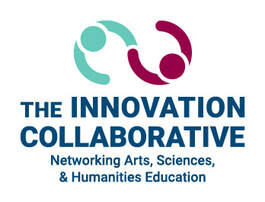Using Drama to Understand the Nature of Science“Using Drama to Expand Student Understandings of the Nature of Science” An article by Lydia E Carol-Ann Burke, Alison McAvella, and Anne Wessels For decades researchers have identified the affective barriers that prevent students from identifying with the roles and practices of science. However, the December, 2020, Science Teacher journal describes experiences that contributed to significant gains in student understanding of the nature of science. These pedagogical strategies allow students to express their feelings and describe experiences in ways that are not common in science education. In an introductory strategy, students sort 15 statements about the nature of science as “Agree” or “Disagree.” Then, students review their whole group’s record of agreement or disagreement and the teacher facilitates a discussion about understandings and students’ personal experiences. In Strategy 2, student pairs create ‘freeze-frame’ depictions (tableaux) to represent the relationship between Science and Student. This strategy of striking and holding a pose is similar to the recent mannequin challenge trend and could be explained and set up in the same way. In Strategy 3, students observe and discuss science-themed drama. The authors cite the Copenhagen movie as one example of a drama that allows students to consider the nature of science. In Strategy 4, students create scenes that represent extracts from a larger storyline. First, the class collectively generates a list of important contemporary scientific issues. These issues can be local or global and can be general or specific to the topic of study. After creating the list, students as a group prioritize the issues (e.g., using a dotmocracy survey or other voting strategy). The top-ranking issues are then distributed as topics for small group work. There, they develop a short scene based on the issue assigned. The goal is to work toward an “inciting incident”, an event that would propel the main character into the central problem of the story in a dramatic or life-changing way. The authors recommend that teachers be patient as students express themselves, being very attentive to the students’ comments, repeating and seeking amplifications and clarifications, until students are satisfied that they have clearly communicated their ideas. https://www.nsta.org/science-teacher/science-teacher-novemberdecember-2020/using-drama-uncover-and-expand-student Ya Gotta Have Art!ESL (English as a Second Language) students in the Engaging Newcomers in Language and Content Education (ENLACE) Academy at Lawrence (Massachusetts) High School, share the same challenges and more as native English-speaking students in these “unprecedented circumstances”. This started with an effort to get a 3-D printer for the art department. It ended up as a major effort in the Samsung Solve for Tomorrow program for ENLACE art teacher Shaddai Vargas. Samsung sponsors a national competition that challenges public school teachers and students to come up with STEM-based solutions to problems impacting their communities. The contest helped Lawrence students come up with a whole world of new possibilities that integrate art, engineering, and technology. Vargas writes: “Teaching STEM through PBL [Project Based Learning] is something that I want to continue for the positive impact it will have on the future…not just for my students but for our community and the world. Integrating technology and PBL in my art class opened a new special vibe where creativity and community are in a constant boost”. Vargas’ students’ projects involved looking for a solution to natural gas explosions, which had devastated homes in the community. As an art teacher, he felt the experience opened a “whole new world of opportunities” for his curriculum. https://www.eschoolnews.com/2021/02/10/how-an-art-teacher-tackles-stem-and-pbl/2/ REALM ProjectREopening Archives, Libraries, and Museums (REALM) is a research project conducted by OCLC (a global library cooperative), the Institute of Museum and Library Services, and Battelle (a global science and technology research institution). It will produce science-based information about how materials can be handled to mitigate COVID-19 exposure to staff and visitors of archives, libraries, and museums. Battelle has contributed data to guide the reopening process. Currently in the third stage of the project, the partnership is monitoring the protocols that have been developed. https://www.oclc.org/realm/home.html EvaluatinG Computer Workshops at the Science MuseumDafni Konstantinidi-Sofrona has reported on research about how computer workshops are interfacing with and supporting science learning in informal settings. The CoderDojo workshops at the Science Museum, London, United Kingdom, are part of the CoderDojo global movement of free, volunteer-led, community-based programming clubs for young people. CoderDojo believes that an understanding of programming languages is increasingly important in the modern world, that it’s easier to learn these skills early, and that nobody should be denied the opportunity to do so. https://www.nsta.org/connected-science-learning/connected-science-learning-march-april-2021/evaluation-computing Larry Ferlazzo offers “Ten Culturally Responsive Teaching Strategies for the Science Classroom” in Education WeekThis column summarizes the culturally responsive teaching experiences and recommendations of 4 teachers, such as:
https://www.edweek.org/teaching-learning/opinion-ten-culturally-responsive-teaching-strategies-for-the-science-classroom/2021/02 Building an Anti-racist Science ClassroomNSTA’s (National Science Teaching Assn.) Next Gen Navigator features a blog on ways to create a supportive and equitable environment in the science classroom. Some suggestions from the blog are listed below.
Read the entire blog at https://www.nsta.org/blog/building-anti-racist-science-classroom
0 Comments
Your comment will be posted after it is approved.
Leave a Reply. |
